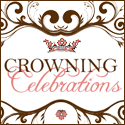col·or
Its often the starting point for event design.
Client's choose their color-scheme based on their favorite colors, their college team colors, eithnic colors or colors that match the scenic surroundings. But little do we consider what color symbolizes and means in culture, history and mood. Here is a little info on each.
Red is the color that we pay the most attention to. It is the warmest and most energic color in the spectrum.
We associate red with love, valentines, danger, desire, speed, strength, violence, anger, emergency exit signs, stop signs and blood. Red can evoke a fight-or-flight response, raise blood pressure and make the heart beat faster. In China red symbolizes celebration and luck, used in many cultural ceremonies that range from funerals to weddings.
In India red is the color of purity (used in wedding outfits).
Light red represents joy, sexuality, passion, sensitivity, and love.
Pink signifies romance, love, and friendship. It denotes feminine qualities and passiveness.
Dark red is associated with vigor, willpower, rage, anger, leadership, courage, longing, malice, and wrath.Pink signifies romance, love, and friendship. It denotes feminine qualities and passiveness.
Brown suggests stability and denotes masculine qualities.
Reddish-brown is associated with harvest and fall.
Blue represents peace, tranquility, calm, stability, harmony, unity, trust, truth, confidence, conservatism, security, cleanliness, order, loyalty, sky, water, cold, technology, and depression. Blue can "slow the pulse rate, lower body temperature, and reduce appetite." Blue is considered a business color because it reflects reliability.
In China, blue is associated with immortality. In Colombia, blue is associated with soap. For Hindus blue is the color of Krishna. For the Jews, blue symbolizes holiness. In the Middle East blue is a protective color.
In China, blue is associated with immortality. In Colombia, blue is associated with soap. For Hindus blue is the color of Krishna. For the Jews, blue symbolizes holiness. In the Middle East blue is a protective color.
Light blue is associated with health, healing, tranquility, understanding, and softness.
Dark blue represents knowledge, power, integrity, and seriousness.
Yellow represents joy, happiness, optimism, idealism, imagination, hope, sunshine, summer, gold, philosophy, dishonesty, cowardice, betrayal, jealousy, covetousness, deceit, illness, hazard, spirtuality and inspiration. The yellow rose is a symbol of friendship, less passionate or threatening than red ones. In Asia yellow is sacred, and imperial.
Dull (dingy) yellow represents caution, decay, sickness, and jealousy.
Light yellow is associated with intellect, freshness, and joy.
Light yellow is associated with intellect, freshness, and joy.
Black is the absence of light and therefore, of color. It represents power, sexuality, sophistication, formality, elegance, wealth, mystery, fear, evil, anonymity, unhappiness, depth, style, evil, sadness, remorse, anger, underground, good technical color, mourning and death.
Green, one of most-often cited favorite colors. It represents nature, environment, health, good luck, renewal, youth, vigor, spring, generosity, fertility, jealousy, inexperience, envy, misfortune. "Its cool quality soothes, calms, and has great healing powers." It is often worn in operating rooms by surgeons. In China, green hats mean a man's wife is cheating on him. In India green is the color of Islam. In Ireland green has religious significance (Catholic).
Dark green is associated with ambition, greed, and jealousy.
Yellow-green can indicate sickness, cowardice, discord, and jealousy.
Olive green is the traditional color of peace.
Orange is a combination of yellow and red. Orange is considered a warm color like red, but to a lesser extent; orange expresses energy. It has luminous qualities and has been used for attention-getting purposes, such as on caution signs. Orange brings up memories of fall leaves, pumpkins and Halloween. It symbolizes balance, warmth, enthusiasm, vibrance, flamboyancy, and is demanding of attention. In Ireland orange has religious significance (Protestant).
Dark orange can mean deceit and distrust.
Red-orange corresponds to desire, sexual passion, pleasure, domination, aggression, and thirst for action.
Gold evokes the feeling of prestige. The meaning of gold is illumination, wisdom, and wealth. Gold often symbolizes high quality.Red-orange corresponds to desire, sexual passion, pleasure, domination, aggression, and thirst for action.
Purple represents royalty, spirituality, nobility, ceremony, mystery, transformation, wisdom, enlightenment, cruelty, arrogance, mourning. Purple is considered an exotic color. Purple dye was made from the mucous gland of a snail. It required thousands of snails to yield 1 gram of dye causing it to be a color only nobles could afford. Today purple is a trendy color targeting creative types and especially popular with weddings.
Light purple evokes romantic and nostalgic feelings.
Dark purple evokes royalty.
White is what we see when all colors come together in perfect balance. It represents reverence, purity, simplicity, cleanliness, peace, humility, precision, innocence, youth, birth, winter, snow, good, sterility, and marriage. In Japan, white carnations signify death. In eastern cultures white symbolizes coldness and sterility.









No comments:
Post a Comment